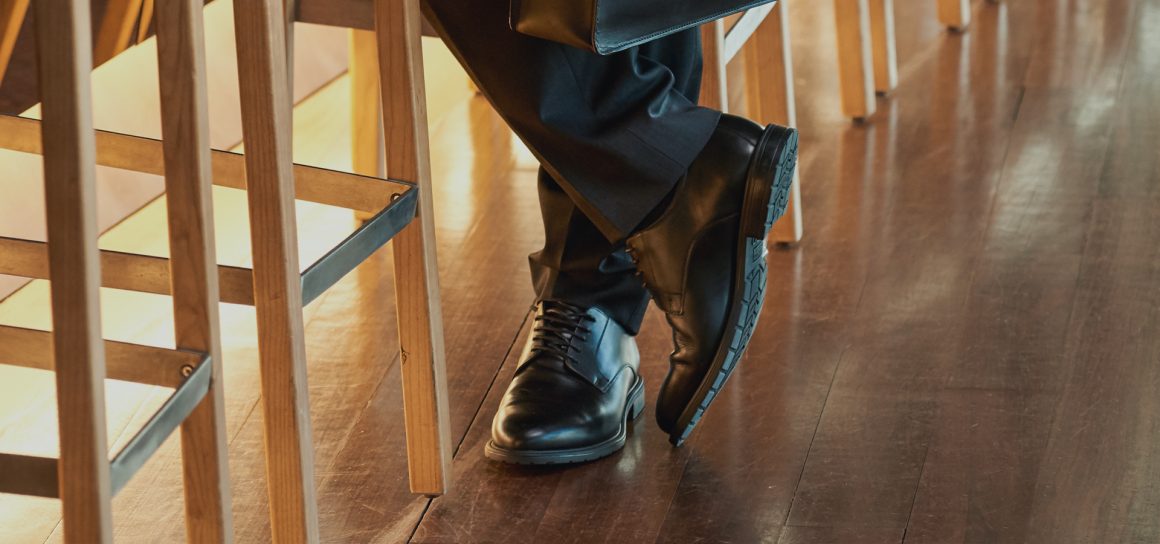In the European Union a certified shoe is a Personal Protective Equipment (PPE) that affords the user protection from hazards encountered at work, at home or during leisure activities. In the professional context, they are instruments for achieving what the EU considers a fundamental right, that of health and safety in the workplace [1].
The presence of the CE marking on PPE is an indication that it meets the EU Directive 89/686/CE for Personal Protective Equipment (PPE) and that it has been tested under a formal process and that it meets the safety and performance requirements of EN ISO 20345, EN ISO 20346 or EN ISO 20347 footwear standards, wherever it is a safety, protective or occupational shoe. Of course, these standards fall under the umbrella of Occupational Health and Safety Regulations.
To qualify the professional footwear for airline work environment, SKYPRO research and development team presented the world first certified men shoes devoted to airline professionals, matching the requirements of EN ISO 20347:2012. These shoes are an innovative solution for preventing injuries at airline activities and give additional safety and protection to end user.
So, next time you look for a shoe for everyday airline activities, you shall just have in mind if it is a certified one. If so, all the following requirements will be there to your protection:
Protective parameters, confirmed by independent laboratorial testing, shall take in account for example, in occupational footwear [2]:
- Innocuousness [3] – Measuring the quantity of trace toxic substances in product or raw materials. More than a dozen of chemical dangerous substances are tested.
- Ergonomics and comfortable use – Usually a small-scale practical wear trial which involves the wearer carrying out a range of movements typical of normal use and reporting any discomfort caused by the PPE.
- Slip resistance [4] – Whole shoe in flat (0º) and lift (7º) position must agree with the coefficient of friction in one or two conditions: in ceramic tile covered with water and soap and inox floor covered with liquid glycerin.
- Protective qualities – In whole footwear as: upper-sole bond strength and in materials: tear strength, tensile properties, flexing resistance, water vapour permeability and coefficient and pH value.
- Additional features – Additional protection may exist and implies marking additional symbols: HI (Insulation against heat), CI (cold insulation), A (anti-static), FO (outsole resistant to fuel oil), HRO (outsole resistant to contact with a hot point, 300 ºC), among others.
References
[1] www.ec.europa.eu/CEmarking[2] EN ISO 20347:2012, Personal Protective Equipment. Occupational Footwear
[3] ISO/TR 16178, Footwear – Critical substances potentially present in footwear and footwear components
[4] European Agency for Safety and Health at Work (EU-OSHA), Preventing Work-Related Slips Trips and Falls, 2001.










